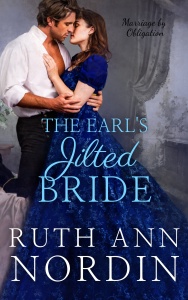Someone mentioned being more interested in finding out more about creating the emotionally engaging character, and I thought this would be an intriguing subject to explore in more depth.
So in the next couple weeks, or however long it takes me, I’ll be doing a series of posts on this topic. I know some writers and people who are thinking of writing check out this blog, so I thought I’d do the posts over here instead of the Self-Published Authors Helping Other Authors blog. People on this blog seem to be interested in the actual writing part of writing, and people of the other blog seem to be more interested in what to do after the book is written. 🙂
Okay, so I figure I’ll start with an introduction on this subject.

ID 47363686 © Tomert | Dreamstime.com
Writing the emotionally engaging character really all boils down to one thing: you have to write with your heart. The time for logical thinking is when you’re in edits. I think the biggest hinderance to our stories is the strive for perfection. Our inner critic is telling us what’s right and what’s wrong while we’re doing the first draft. Now, I would listen to this critic to a point. You want to use proper punctuation and sentence structure, and you want to make sure you maintain conflict and resolve all plot points. This will make life way easier during the editing stage.
When I say to write the first draft with your heart, I mean you shouldn’t limit your characters’ emotions. You are sharing the character’s story, not your own. You have to be willing to fully immerse yourself so deeply into the character that you actually become the character. Everything the character feels must be what you feel. If the character’s hungry, you must be hungry. If the character’s in great despair, you must (at the very least) have tears fill your eyes. If the character’s laughing, you must find yourself chuckling right along without realizing it. What happens is that you step into the character’s shoes and take his journey with him. You might be the author, but it is really the character who is sharing the story.
This is where showing vs. telling comes into play. It’s one thing to tell a reader that a character feels a certain way, but it’s an entirely different thing to show it. I’ll try to get more into this technique in the future. But for now, I want to give an overall view of what I’m hoping to explain in the series of posts I’m doing on this topic.
I know it can be hard to understand the difference between telling vs. showing. It sure was for me. You can hear a lot about it a lot, but for some reason, it’s one of the hardest concepts to grasp. It’s way more than a series of words to describe an emotion. Showing is all about immersing yourself so deeply into the character that the character is writing the story for you instead of you writing the story for the character (as I mentioned above). But this isn’t something that is automatically learned. It takes time to get into this mindset.
I became serious about writing in 2002, and I made all the errors new writers are prone to making. I switched point of view in mid-scene. I did tons of backstory early on in the book instead of weaving it throughout the story when it added much more to the tension. I repeated things over and over as if the readers weren’t able to get the information the first couple of times I said it. I made other glaring errors that I can see right away when I pick up one of my early books. But it took years and years of writing to see these things.
Oh, I had the basics down. I had clean punctuation, knew to capitalize the first letter in a sentence, knew how to structure dialogue, knew my homophones pretty well (minus a couple words that I have since learned like peak, peek, and pique), and other details that go into creating good essays in school. You definitely want to start at the basics. Get those down first if you’re weak in these areas. It’ll make it easier for your reader to get into the story.
My 8th grade English teacher, Mrs. Harner, often said, “The goal of good writing is to make reading easy for the reader.” That’s what clean writing does. What good storytelling should do is immerse the reader into the character so that the reader takes the journey with the character.
This is a process to learn. We don’t tell our very best story with our first book. I hope you’ll be patient with yourself as you grow as a writer. We all have to start somewhere. These things don’t happen right away. You will run across some people who’ll think you need to have your books perfect, but the truth is, no book is perfect. The reason I say that is because no one is perfect. Only the perfect person can write the perfect book.
So my hope is that you’ll give yourself grace and mercy during this process. Do your best and strive for improvement. Make the book you’re currently writing (or thinking of writing) better than anything else you worked on before. We only fail when we stop trying. In my opinion, if more people understood this, writing would be a lot more enjoyable.
In the next week or so, I’ll have another post on this subject. In the meantime, is there anything specific you want me to tackle on creating an emotionally engaging character?





Great post and very true on many points! I know my very first book was horrible (so horrible i literally threw it away, LOL!) And if you stop writing and start up again it will be just as stiff as when you first started…I learned that the hard way.
I cringe whenever I read anything from my early days, and I purposely don’t promote those books because I can’t stand how I was back then. I haven’t thrown them out, but I definitely know the feeling. 🙂
You’re right on the writing being stiff after an extended time away from it. That’s why I hate the long breaks between books.
Very good advice! I have a couple of books from the early days that aren’t that great (you can tell by the 3 star averages on those, LOL). And yet, some people still like them. The goal is to get as many readers as possible to like them.
I notice my earlier books have a lower star rating, too. Maybe it’s the norm to get a higher star average the more we write because we’re improving. However, what surprises me is that even today, my early books tend to sell better than most of the ones that came later. There must be something about our early works that resonate with some people.